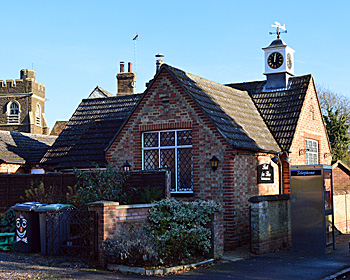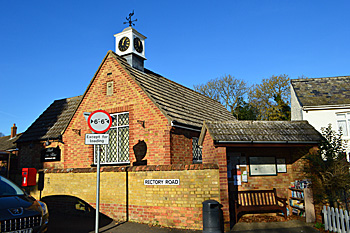Early Education in Steppingley
Volume 81 published by Bedfordshire Historical Records Society (2002) is a series of episcopal visitations undertaken in the first twenty years of the 18th century, edited by former County Archivist Patricia Bell. At each visitation a list of questions was sent out in advance, one of which enquired about the provision of schools in each parish. In 1706 the reply was made that there was no school in the parish. We know from a mortgage that Robert Jones was a schoolmaster in Steppingley in 1708 [WE295]. The reply sent in 1709 read: “One Schole, about 20 children taught by one Robert Jones, at weekly payments”. This school was evidently short-lived, as in 1717 the reply to the questionnaire read: “We have no publick, or charity school endowed or otherwise maintained”. The same reply was given in 1720.
In a biography Benjamin Dutton wrote that his elder brother: “who had been at School manyYears, came Home to my father’s and set up a Grammar-School, and had several Boarders. And I was taught Writing, Arithmetick and somewhat of Grammar by him”. Dutton was born in 1692 and so is presumably referring to the time before 1706.
In 1818 a Select Committee was established to enquire into educational provision for the poor. This was no doubt prompted, in part, by the recent foundation of two societies promoting education and specifically the building of schools. The Society for Promoting the Lancasterian System for the Education of the Poor was established in 1808 promoting schools run along the lines pioneered by Joseph Lancaster, who had himself copied those of Dr Andrew Bell, in which older children taught their younger fellows. The Society was renamed the British and Foreign School Society in 1814. It was supported by a number of prominent nonconformists, Lancaster himself was a Quaker, and sought to teach a non-sectarian curriculum. In answer to this perceived nonconformist takeover of local education the National Society was formed in 1811 to encourage the teaching of poor children along Anglican lines, including the catechism. The Select Committee sent a questionnaire to all parishes in the country asking for: particulars relating to endowments for the education of children; other educational institutions; observations of parish needs etc. The reply from Steppingley stated that there was no school and that “the poor are without the means of giving their children instruction”.
In the country generally the number of schools built continued to grow over the next fifteen years so that by 1833 the government agreed to supplement the work of the two societies, and local benefactors, by making £20,000 per annum available in grants to help build schools. It also prompted another questionnaire to be sent to each parish in England asking for details of local educational provision. Steppingley now had two Church of England Sunday schools, both of which commenced in 1829. One had 28 boys the other 22 girls all “supported by the minister and others”. In those days a Sunday School was just that, a school which met on a Sunday, usually in the church or nonconformist chapel or other similar building, teaching more than the religious topics with which they are associated today.

The Village Hall (former school) December 2016
In 1840 the Duke of Bedford made a contribution to building a school for the parish [R3/4187]. This building survives as the Village Hall. The next national enquiry was in 1846/7 when the Church of England made an enquiry as to all its church schools. This was against the background of a new Whig government which championed secular education and the increasing importance of nonconformists, particularly Wesleyan Methodist, and Roman Catholics in providing schools. No return was made for Steppingley but we know that the school was a church school, as it is included in a terrier compiled by the Archdeaconry of Bedford in 1848 [AB/RD/A0]. In 1868 the first two surviving records kept by the school itself began - a logbook of daily events [SDSteppinley1] and an admission register [SDSteppingley16].

Village hall (former school) and bus shelter December 2016